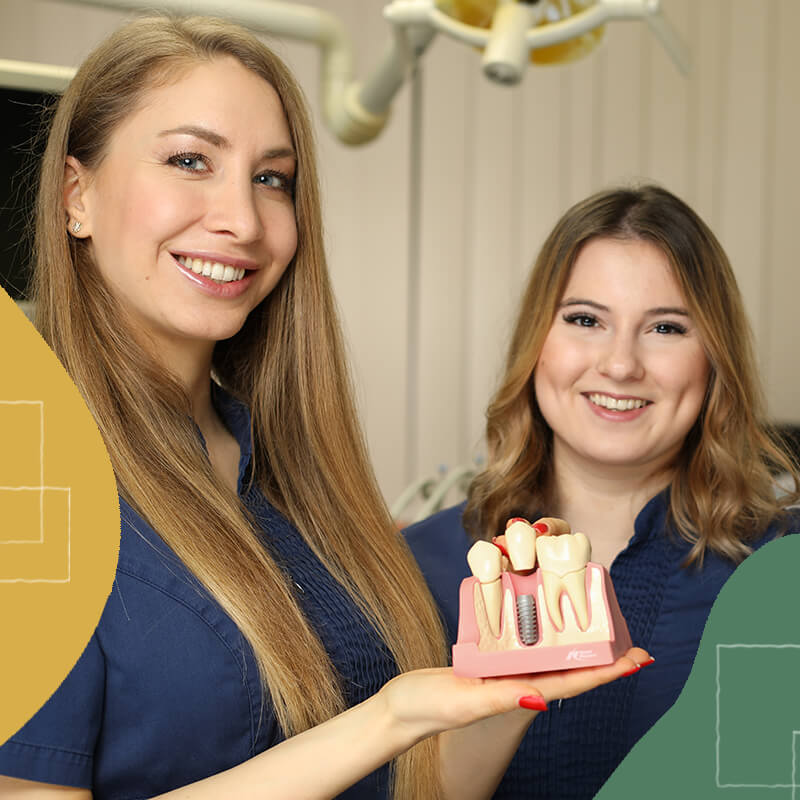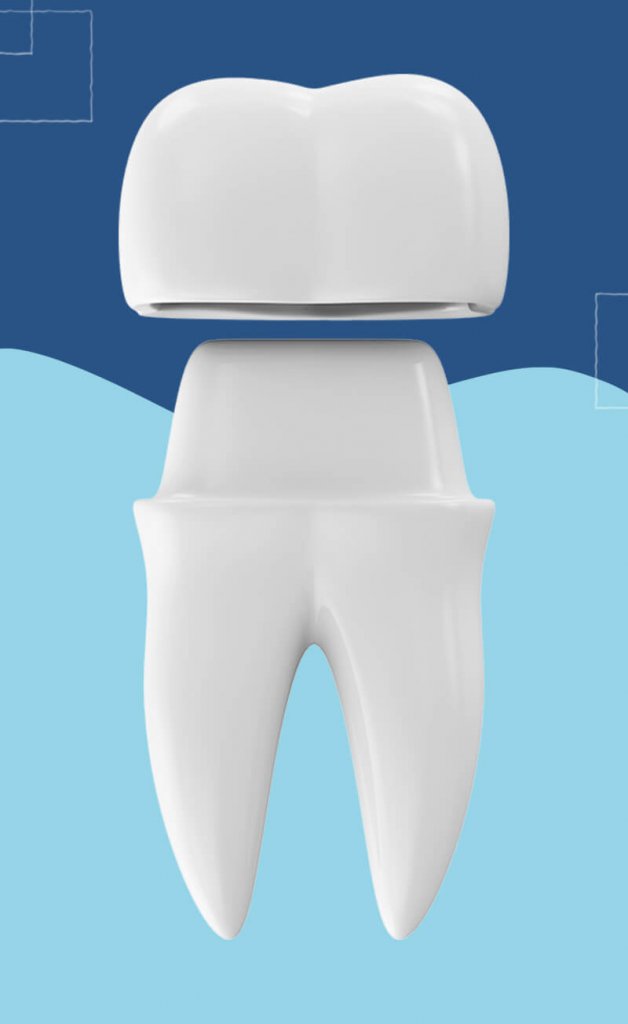In this article we are going to go through everything important about dental crowns. We will discuss what they are made of, when they are used, and most importantly how much do they cost. Our guide will be Dr. Attila Pesei.
Original teeth vs dental crowns
Every tooth has two main parts: the roots and the crown. The crown part is the one that is above the gum, so the visible part of the tooth. When this part of the tooth becomes damaged or broken it has to be replaced. Dental crowns are designed to replace the entire visible part of the tooth.
 Okay, but can it go on top of implants?
Okay, but can it go on top of implants?

Sure it can. When the whole tooth is missing (root and crown), and artificial root is required. Implants are the perfect solution, because after the healing period they can be fitted with a crown, providing a full tooth replacement.
In other cases, the root is intact but the crown part is damaged or decayed. This is when the dental crown is fitted on the healthy root, preventing any further damage to the tooth, and restoring it to it’s former glory.

Materials and manufacturing
First of all, it is important to mention temporary crowns. These are used for a short period of time, mainly during healing periods. They are made of plastic, therefore they are budget friendly.
Finalized crowns used to be made of metal, but this technology is outdated. Modern dentistry uses two type of crowns: porcelain fused to metal, and metal-free variants. Metal-fee crowns are designed and manufactured with the aid of computers.
Porcelain fused to metal crowns are built up from two main parts. A metal cap is fitted on the tooth, sealing it completely, therefore protecting it. This metal cap is covered with a thin layer of porcelain, providing an aesthetic and natural look to the entire solution.
Metal-free restorations can be crafted from several different materials, using different methods.
Zirconium-dioxide crowns have a hard shell drilled out be a special milling machine, and this shell is covered by porcelain.
Monolithic crowns are carved out from a single block of ceramic.
Full porcelain crowns are made out of small porcelain pellets, which are formed into a crown by a machine press.
So many options. Which one should I choose?
When it comes to picking the most suitable type of crown, we should always consider two factors: aesthetics and functionality. Metal-free solutions provide the most natural look, and they can be used by people with metal allergies. Porcelain fused to metal crown’s metal base can become visible as time goes by, and the gum recedes.
However, if the crown is fitted on an implant, we would only recommend using porcelain fused to metal solutions, as they feel more natural when used for chewing/biting. This is due to the fact that implants are integrated into the jawbone, so they are a lot more rigid than regular teeth.
However, aesthetics is not everything. From a functional point of view, we should consider the forces applied on the crowns. Full porcelain crowns provide the nicest result, but due to their structural weaknesses they cannot be used in any position. Monolithic crowns on the other hand are almost indestructible.

Prices
The price of each type of crown is determined by the materials and techniques used during its production. Porcelain fused to metal crowns will always be the cheapest alternatives for tooth replacement. At VitalEurope porcelain fused to metal crowns cost £219, while zirconium crowns cost £339 each. While technically they are capable of achieving the same results, we should always keep the aforementioned factors in mind, when we are picking the type.
 How long will these crowns last?
How long will these crowns last?

While crowns are manufactured in only a few hours, they are designed to stay in position for years. The average lifespan of a dental crown is 10 years, but we have seen crowns that stayed in position for 15 years. With all the technological advancements, the lifespan of crowns are getting longer and longer.
How to take care of crowns
In order keep the crowns for many many years, we need to properly maintain them. Unlike original teeth, crowns cannot decay. However, the gum still requires proper care. The rule of thumb is to keep brushing the crowns as if they were our own teeth, so no harm can come to them. Doing this will also ensure the healthiness of the gum.

